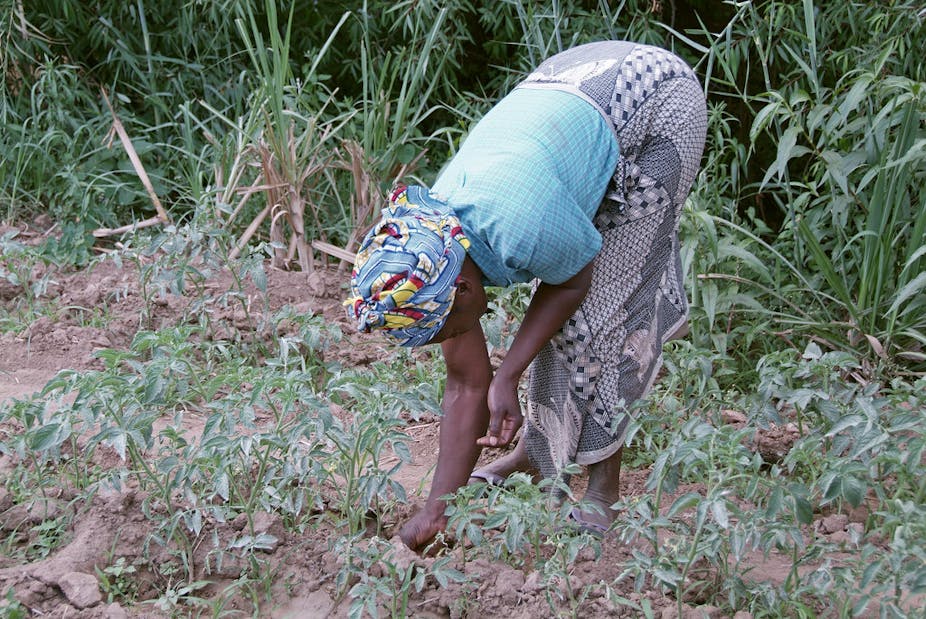When a woman has access to and control over land and its revenue streams, she and her family benefit. Multiple studies have shown how women invest their land-based earnings in the health, nutrition and education of family members.
But for this to happen, customs that favour granting land to men must be altered. This requires both structural change, through for example government policies, and socio-cultural change.
The Zambian government has worked with civil society organisations to create a gender equality and land governance framework. Civil society organisations have used their social networks and through capacity building programmes pursue gender equality in the allocation of land in customary tenure systems.
I set out to study some of these programmes. In a recent article, I documented how women gain access to land in areas of Zambia where access is governed by traditional leaders and local customs. I was specifically interested in the role that civil society organisations play in strengthening women’s land rights in these areas.
Civil society organisations and their donors engage in five key activities that help women get access to land. They build and maintain regional and national networks; they document customary land rights and they train chiefs about gender equality. They also support men and women to work collectively within the home, and empower women to work together on pieces of land.
These activities show how civil society can support and expand the space for women’s land rights. Working with inter-generational family networks also might expand women’s access to economically-productive resources such as land.
Women’s rights organisations in other countries might draw on the Zambian experience, tailoring it to the local socio-economic and historical context within which they work.
Customary law
Zambia has two categories of land, state land and customary land. State land includes land in urban areas and land used for mining or nature conservation.
Customary land is administered by traditional leaders, such as chiefs and headpersons, according to customary law that is unwritten and based on local customs. Customary law is valid under the Constitution. Any customary practice that contradicts the constitution is illegal.
Women in customary tenure systems have what are called secondary land rights. This is because Zambia’s 288 chiefs, and village headpersons, handle land issues and generally grant occupancy and use rights to men because they’re considered the head of household. A woman tends to get access by asking her husband, or another male relative, to use a portion of the allocated land.
Gender activists are working to increase the prevalence of women as primary land rights holders. Their work is being helped by the fact that Zambia has a supportive policy environment thanks to the 2016 Constitution and the government’s gender policy.
The policies, together with a network of women and gender-oriented civil society organisations, have created momentum for legal reform and new measures to promote gender equality in the land sector. Chiefs, court officials, and men and women at the grassroots level have access to new tools to reconceptualise how men and women might work, live and develop their communities together.
Documenting and training
Changing the land use pattern faces a number of challenges. One of them is that there isn’t proper documentation of boundaries, or even of who has rights to what.
For example customary land in Zambia is neither systematically mapped nor registered. This leaves boundaries between individual plots unclear.
International organisations are working with chiefs and community groups like the Zambia Land Alliance to create what are known as Traditional Land Holding Certificates. These recognise land rights at either the individual or household level. Certifications clarify rights, verify claims through boundary demarcation, and end with the issuance of a certificate. The certificates allow a woman’s name to be listed as the land’s “primary” rights holder.
The certificate is designed to reduce property grabbing and the common practice of expelling a woman from a piece of land after her husband’s death. Establishing a system that registers these certificates and makes rights public would mean that women have a better chance of being protected.
Another major gap is knowledge. Chiefs don’t always know what the country’s policies and laws entail. Civil society organisations routinely hold provincial-level training for chiefs to explain women’s land rights. This isn’t always easy. One chief stated that “men need a bigger area” of land to cultivate than women do.
Gender rights activists try to identify more progressive chiefs who are willing to change local practice and tell men not to deny their partners’ land.
Collaboration
Getting men and women to work together when it comes to land is also a valuable intervention.
In many communities, husbands instruct their wives where to plant their crops. And when the cropping season is over, a woman might not be allowed to cultivate that same plot again and the husband will take it for his own cultivation.
One civil society organisation brings husbands and wives together and encourages them to own land and cultivate together. Bringing men and women within the household rather than maintaining separate fields closes the gender gap in land.
Another type of programme works through village-level groups that promote women’s collective access to land. Groups might ask their chief for a piece of land for growing crops or other income generating activities such as pig or goat rearing. If a widow’s relatives grab the property after her husband’s death, group leaders can intervene and help her keep her house and then allow her to cultivate a plot on the group’s land.
Some organisations offer training in financial management, legal awareness, and leadership. Women then use these skills to organise, to obtain and maintain control over land and to be less dependent on men. Access to resources is based on relationships. Sustainable land rights programming and gender-equality initiatives must change not only how women think and behave but men too.

